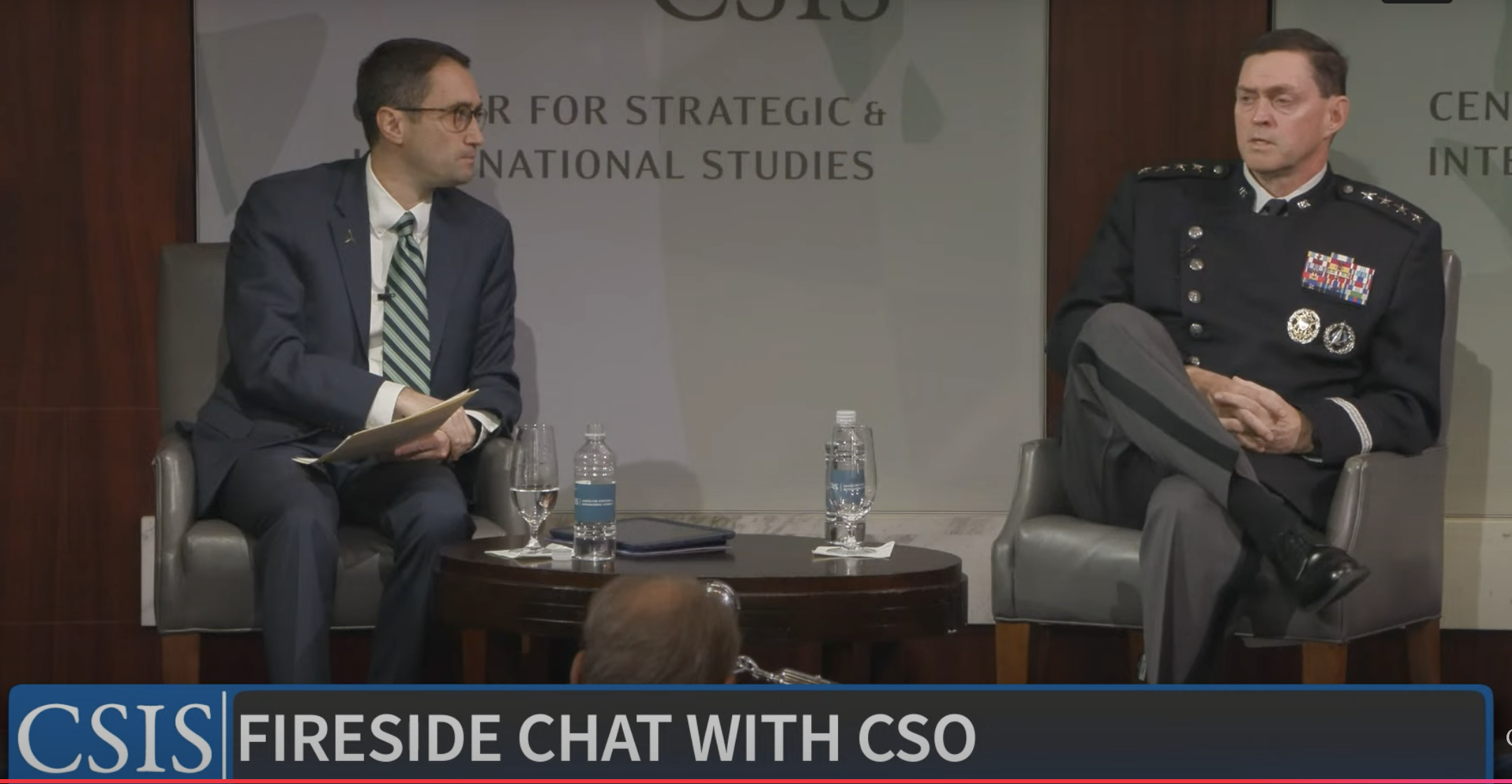Now Reading: Space Force roadmap set to define what the service needs and why
-
01
Space Force roadmap set to define what the service needs and why
Space Force roadmap set to define what the service needs and why


WASHINGTON — The U.S. Space Force is nearing completion of a strategic blueprint that will map out what the service must build, buy and field over the next 15 years as it prepares for a future where orbit is treated as a contested military domain.
Gen. Chance Saltzman, chief of space operations, said the framework, known as the “objective force,” is now in its final stages.
“I think the bulk of the work is almost complete,” he said Nov. 20 at the Center for Strategic and International Studies. He wants the document, or set of documents, to anchor long-range planning and help the Space Force evolve into a service built to fight and defend in space.
The 15-year horizon is meant to go beyond fleet lists of satellites and launch vehicles. Saltzman framed it instead as a plan to build a force that can outpace adversaries and sustain space control. That term signals a shift from viewing space as a support function to treating it as a combat domain where the United States must hold freedom of action and deny hostile activity.
Demand signal for Congress, industry
Saltzman said the Space Force, now almost six years old, needs to formally articulate long-term requirements to provide a “demand signal,” especially to Congress and to companies investing in national security missions.
“We must formalize our approach to force design,” he said. This is something that “all of our stakeholders” want to see, including lawmakers, defense contractors, researchers and foreign partners. “We have to clearly communicate the war fighting space architecture we need now and in the future,” he said. “Our objective force tries to do just that, tries to formally document what, where, when, how many space capabilities, personnel resources we need to achieve mission success.”
Saltzman said the goal is to deliver a “clear, complete and hopefully stable demand signal for all to follow.”
The blueprint builds on years of modeling and simulation by the Space Warfighting Analysis Center. The center was created to run data driven, physics based assessments of future space architectures.
“What they’ve done has been incredible in terms of giving us clear articulation of what the systems could look like, need to look like in order to meet the mission requirements that we laid out,” Saltzman said. The objective force review expands that work and takes a broader look at “what it takes to field a combat credible force, not just a capable system, but a combat credible force.”
Saltzman said the document will be organized by mission area. For missile warning, for example, it will identify “the systems that we believe will be in place in the next 15 years … in order to continue to do missile warning.” That includes existing satellites, programs in development and concepts that have not yet been started. It will also address personnel, facilities and other support infrastructure.
He said the intention is for Congress, industry and international partners to “see a stable, comprehensive demand signal to what we need to buy, what approvals we need, how much resources we might need to put that in place.”
Timeline slips but core work nearly done
Saltzman had previously set a goal of releasing the objective force document by the end of 2025. He acknowledged the timeline may slip. His staff has pushed to extend the deadline, but he said most of the underlying work will be finished soon.
“While you may not see a published document before the end of December, I can pretty much tell you that the work will be complete by the end of December, and we will be in final approvals,” he said. The blueprint will then go to the secretary of the Air Force, followed by release to stakeholders, projected for early 2026.
Saltzman stressed the plan will not be static. “It is a living document,” he said, with updates expected every five years and annual adjustments tied to budgets and program decisions.
Industry watchers say the 15-year plan will be seen as a statement of ambition, but execution will depend on funding stability, acquisition reform, industrial capacity and political support.
Stay Informed With the Latest & Most Important News
Previous Post
Next Post
-
 012024 in Review: Highlights from NASA in Silicon Valley
012024 in Review: Highlights from NASA in Silicon Valley -
 02Panasonic Leica Summilux DG 15mm f/1.7 ASPH review
02Panasonic Leica Summilux DG 15mm f/1.7 ASPH review -
 03From Polymerization-Enabled Folding and Assembly to Chemical Evolution: Key Processes for Emergence of Functional Polymers in the Origin of Life
03From Polymerization-Enabled Folding and Assembly to Chemical Evolution: Key Processes for Emergence of Functional Polymers in the Origin of Life -
 04How New NASA, India Earth Satellite NISAR Will See Earth
04How New NASA, India Earth Satellite NISAR Will See Earth -
 05And Thus Begins A New Year For Life On Earth
05And Thus Begins A New Year For Life On Earth -
 06Astronomy Activation Ambassadors: A New Era
06Astronomy Activation Ambassadors: A New Era -
07SpaceX launch surge helps set new global launch record in 2024




















